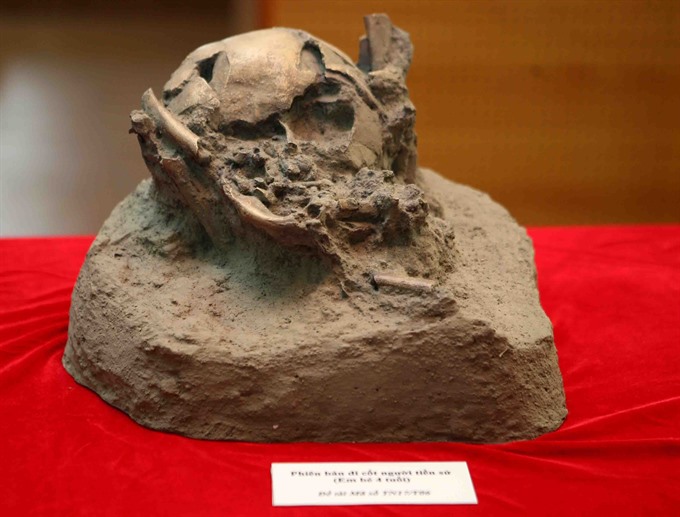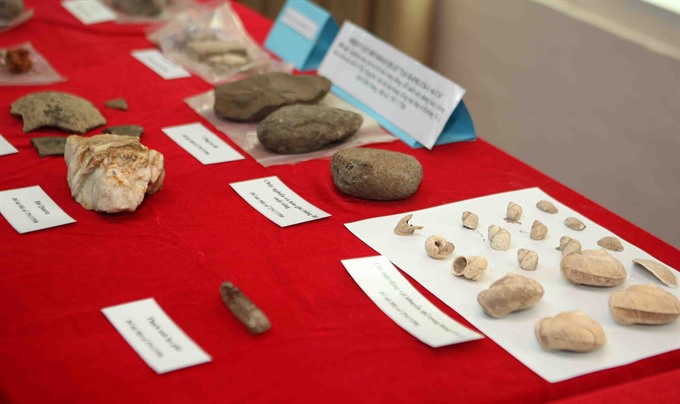 Life & Style
Life & Style

In a September 18 announcement, the National Museum of Nature released new details on a shocking discovery of prehistoric corpses in the central highlands.
 |
| Ghost story: A copy of the remains of a young boy found in a volcanic cave. — VNA/VNS Photo Thanh Tùng |
HÀ NỘI — In a September 18 announcement, the National Museum of Nature released new details on a shocking discovery of prehistoric corpses in the central highlands.
A report filed earlier this month to demonstrate the Krông Nô volcanic park in the central highlands province of Đắk Nông meets UNESCO criteria for recognition as a global geopark also revealed that the corpse of a baby girl had been discovered in one of the area’s many caves.
Museum director Nguyễn Trung Minh’s recent announcement said the excavation had uncovered two additional corpses, all of which date back nearly 7,000 years. Pieces of ceramics, stone and animal bones were also found in the cave.
“This finding is the first of its kind in the area,” Minh said. “It is a shocking discovery – the Krông Nô volcanic cave system is one of the largest of its kind, and the only one in Southeast Asia where we have found traces of prehistoric people.”
These remains also bolster the site’s case for recognition as a UNESCO site.
Professor Nguyễn Lân Cường, general secretary of the Việt Nam Archaeology Association, said the three corpses included two adults and a child of about four years old.
The bodies were found around one metre below the surface of the cave, surrounded by trace remains of ten total corpses.
The finding opens a new chapter in the study of Việt Nam’s anthropology.
 |
| Past possessions: Other objects found at the site offer insight into its history. — VNA/VNS Photo Thanh Tùng |
“We looked far and wide in the central highlands and managed to find traces of early people, but we had never located human remains in a volcanic environment,” Cường said. “I sent news of our discovery to experts in five countries, and all of them agree it is the first of its kind.”
He added the red basalt soil of the region is not ideal for preserving remains.
“It seems the early people who lived in this cave system ate snails and mussels, the shells of which contain a lot of calcium that has changed the makeup of the environment inside the caves and helped to preserve the corpses,” he said.
Scientists have also found traces of fires and rubbish, suggesting each cave had a designated purpose. Some could have served as long-term residences while others were merely temporary hunting camps.
The discovery happened thanks to a research project, chaired by La Thế Phúc of the National Museum of Nature, designed to establish a museum at Krông Nô on the cave heritage of the central highlands.
The museum will co-ordinate with experts in the coming months to continue research into the prehistoric people of the red basalt area. The same scientists will propose areas for further study on the topic of volcanic cave archaeology in Southeast Asia.
The cave system, which stretches some 25 kilometres, was first discovered in 2007. It demonstrates a structure typical of caves formed by volcanic activity, and also contains traces of vegetables from millions of years ago. — VNS




